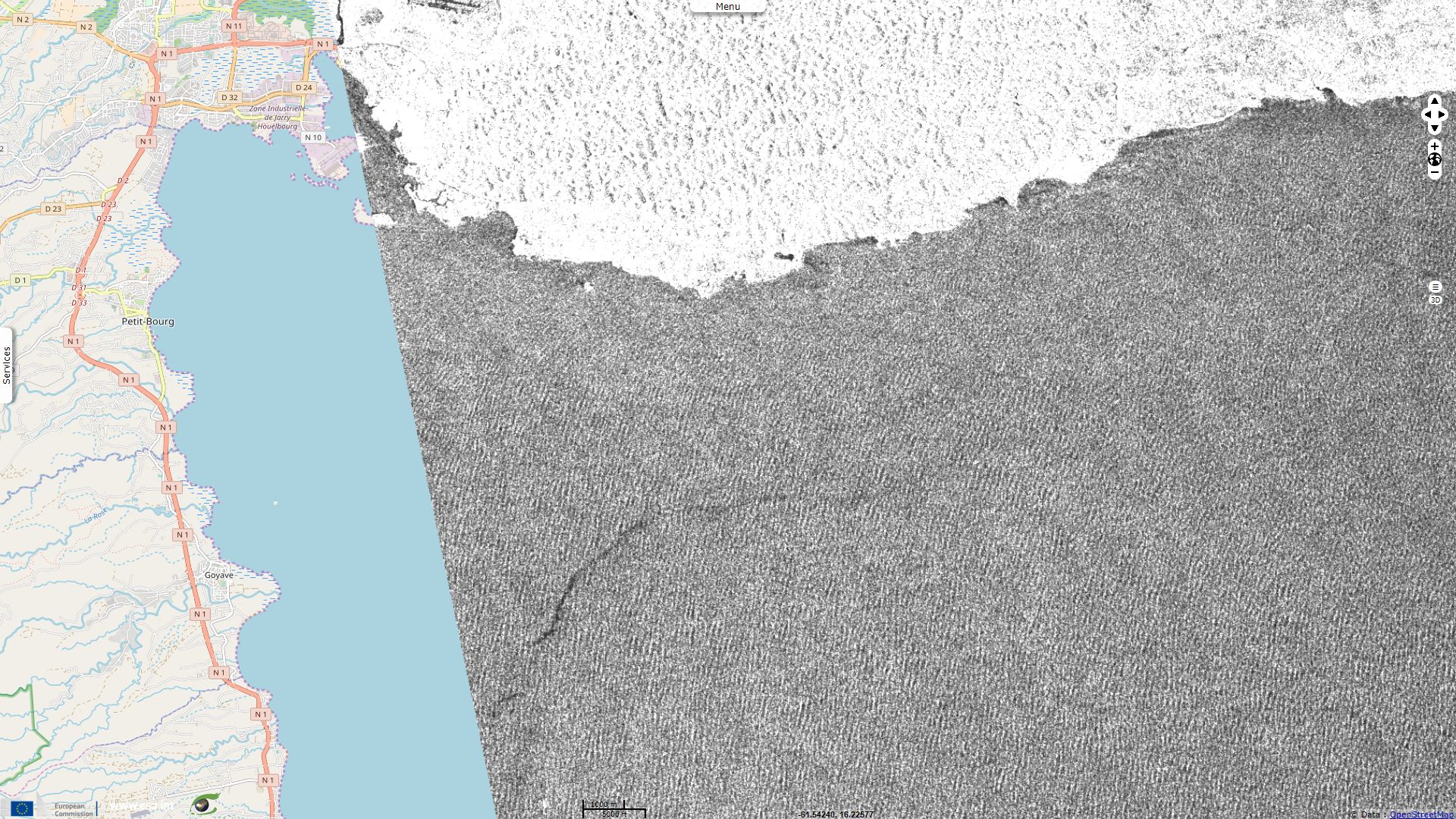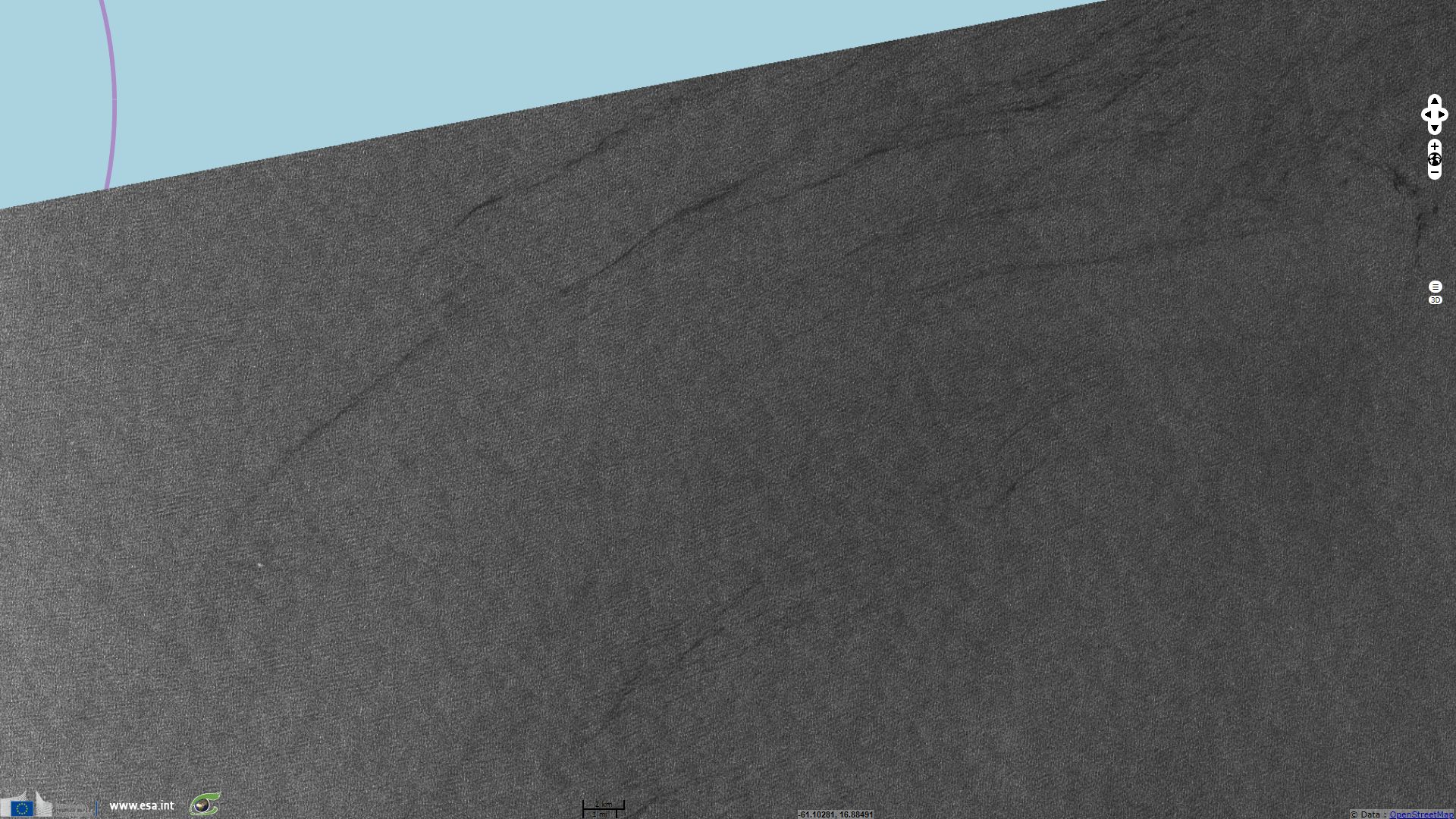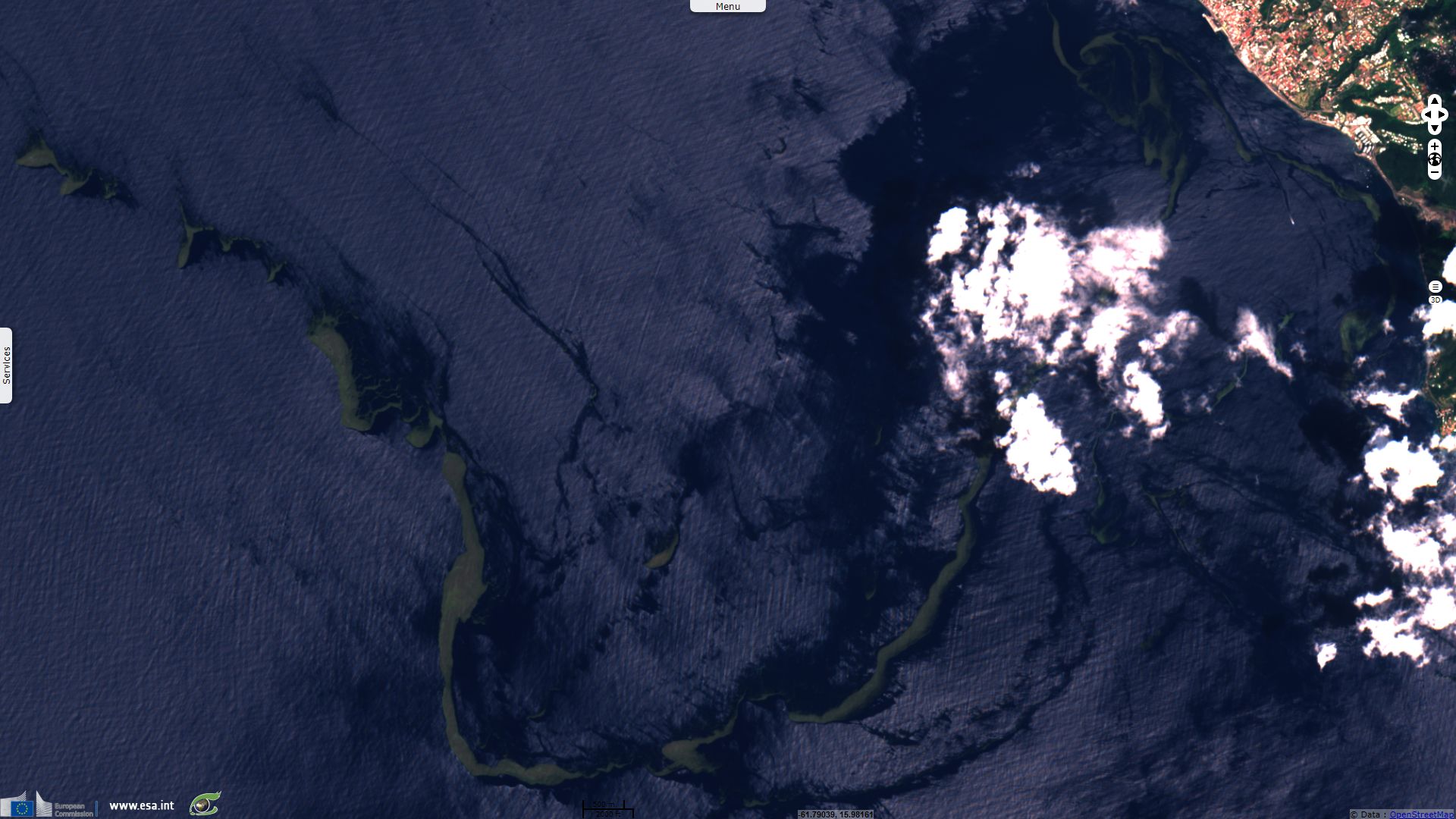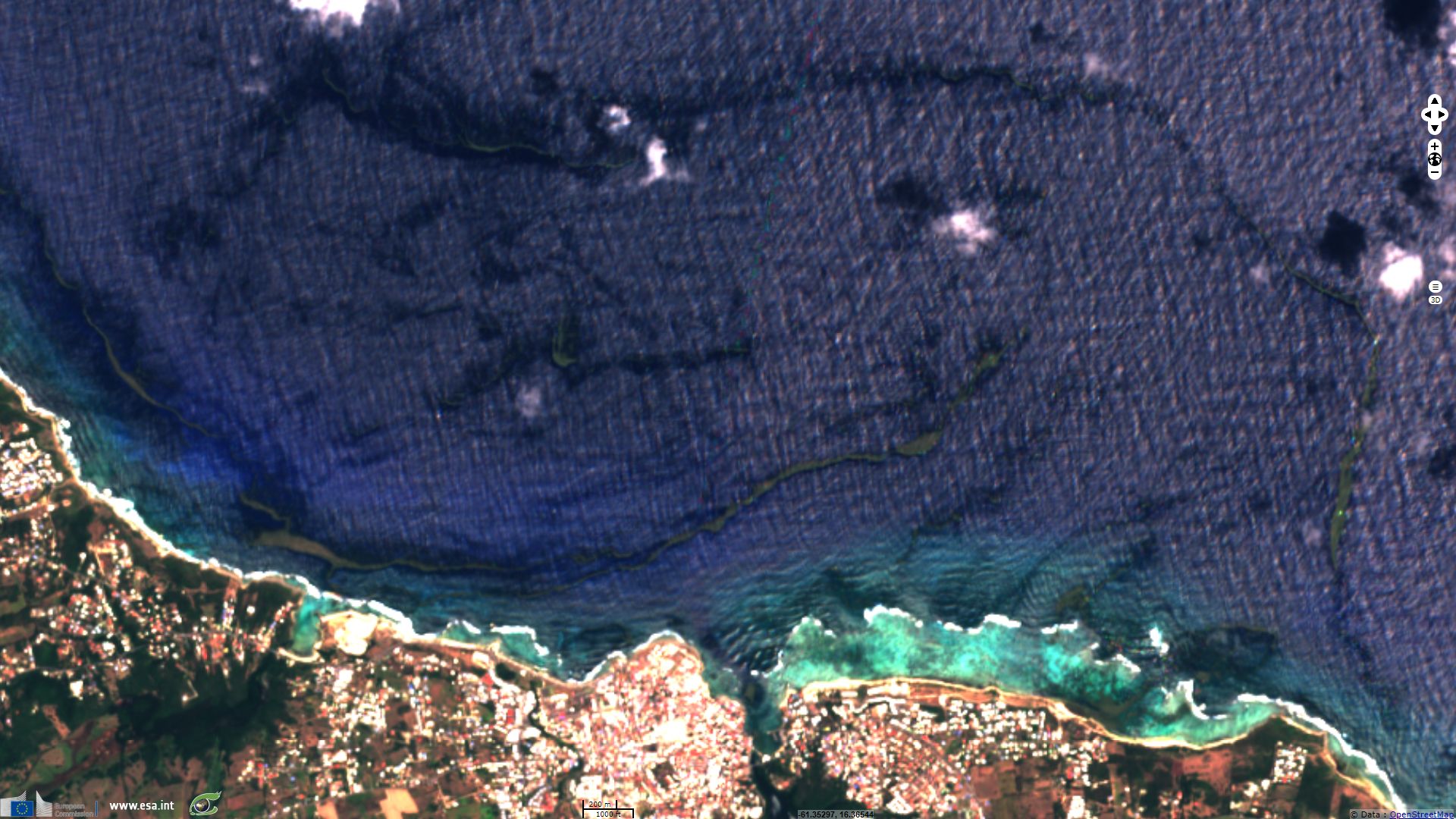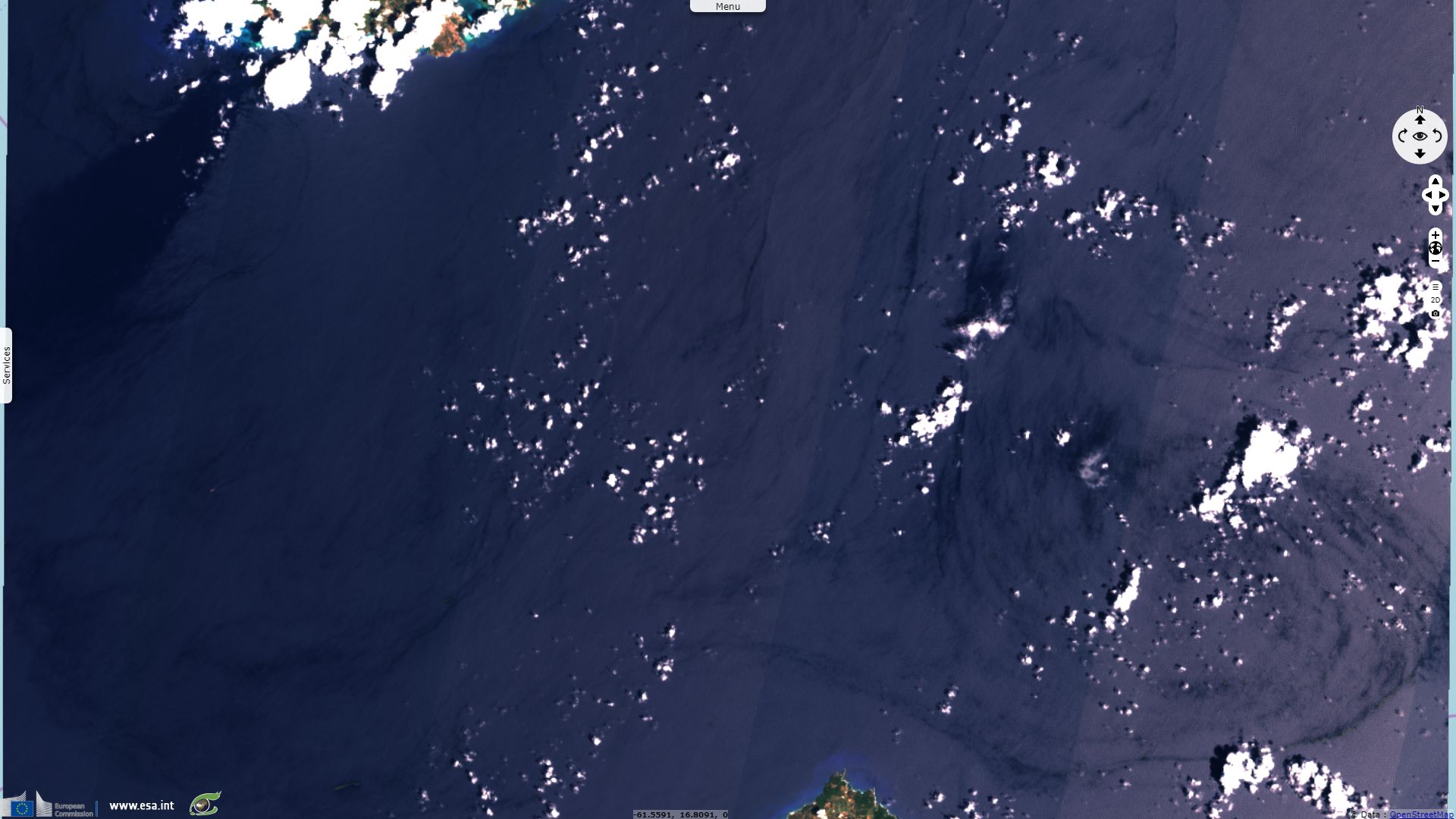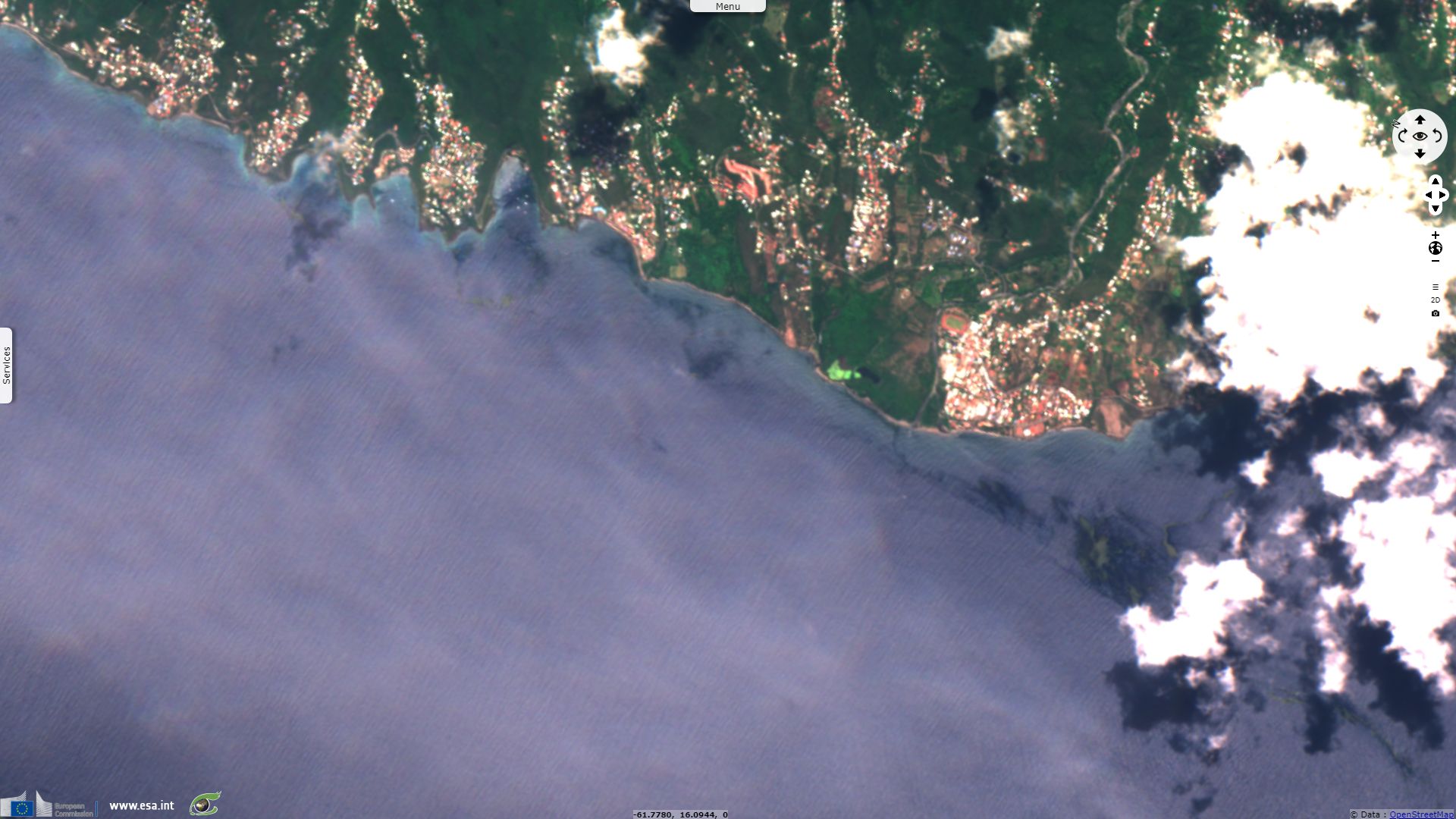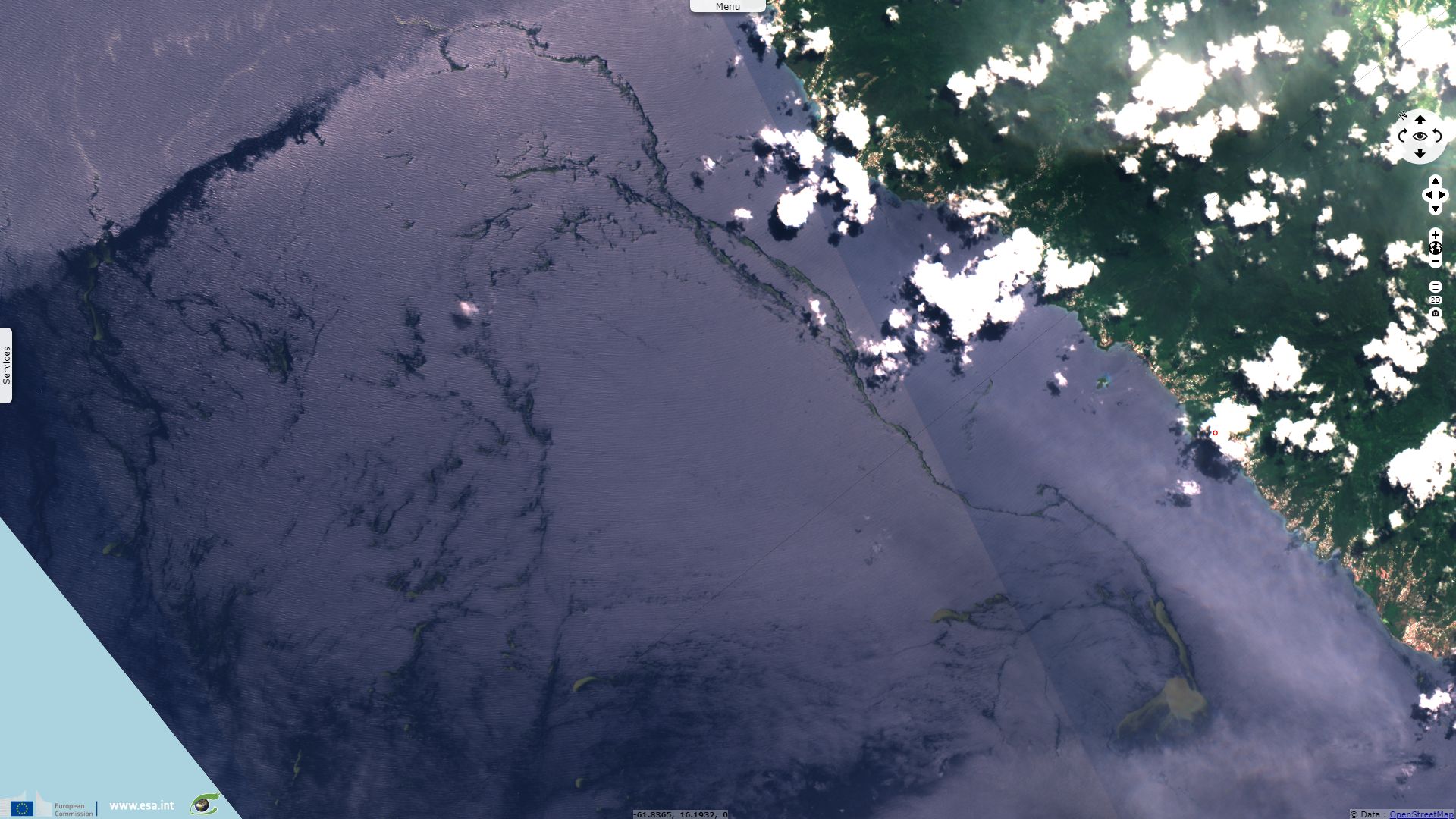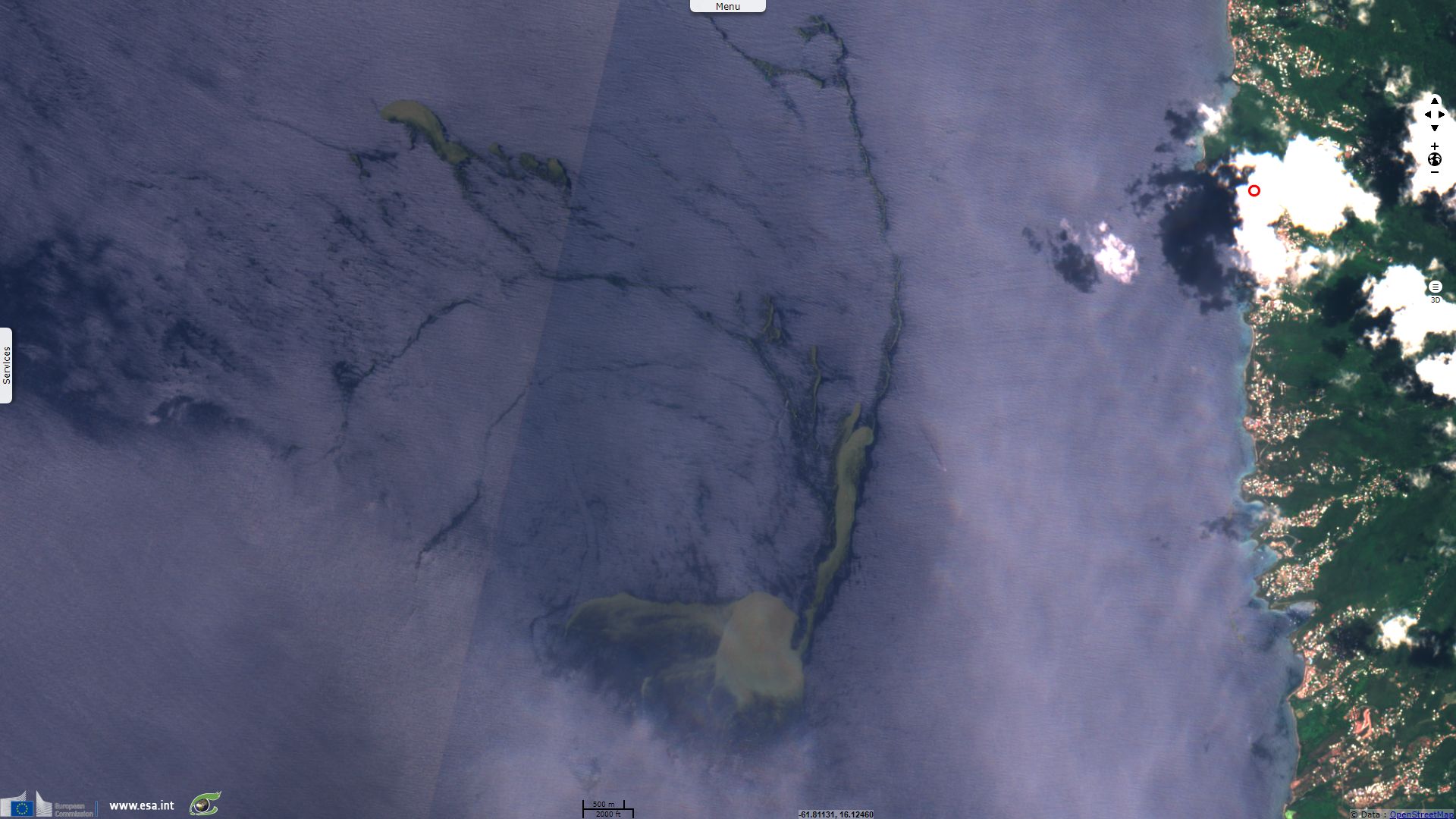World Oceans Day - Algal invasion in paradise islands
Sentinel-1 CSAR IW acquired on 24 March 2018 at 22:11:11 UTC
Sentinel-2 MSI acquired on 28 March 2018 at 14:47:31 UTC
Sentinel-2 MSI acquired on 27 May 2018 at 14:47:31 UTC
Sentinel-2 MSI acquired on 28 March 2018 at 14:47:31 UTC
Sentinel-2 MSI acquired on 27 May 2018 at 14:47:31 UTC
Keyword(s): Ocean monitoring, coastal, water colour, algae, agriculture, pollution, beach, tourism, fishing, Guadeloupe, Antigua, France, Caribbeans, Gulf of Mexico
Famous for their beautiful landscapes, fine sand beaches bordered by turquoise waters the Caribbeans have been regularly plagued by sargassum algae mass invasion for several years now.
Translating the article published by David Himbert in Quebec journal Le Devoir, Ivette Romero mentions this phenomenon is repeatingislands.com: "The many tourists who frequent these tropical paradises to escape the rigors of the winter will have noticed it: day after day, considerable quantities of Sargassum seaweed accumulate on the dream beaches and to spoil the postcard view. An imposing and odorous brown barrier (the decomposition of algae gives off a strong smell of rotten eggs) now separates the immaculate white of the sand and the turquoise blue of the ocean".
"Therefore, the crisis represents a real threat for the entire Caribbean, whose economy is mainly based on tourism revenues." "The fishing industry, the other pillar of the Caribbean economy, is also affected by the crisis as seaweed banks accumulate in ports and damage equipment."
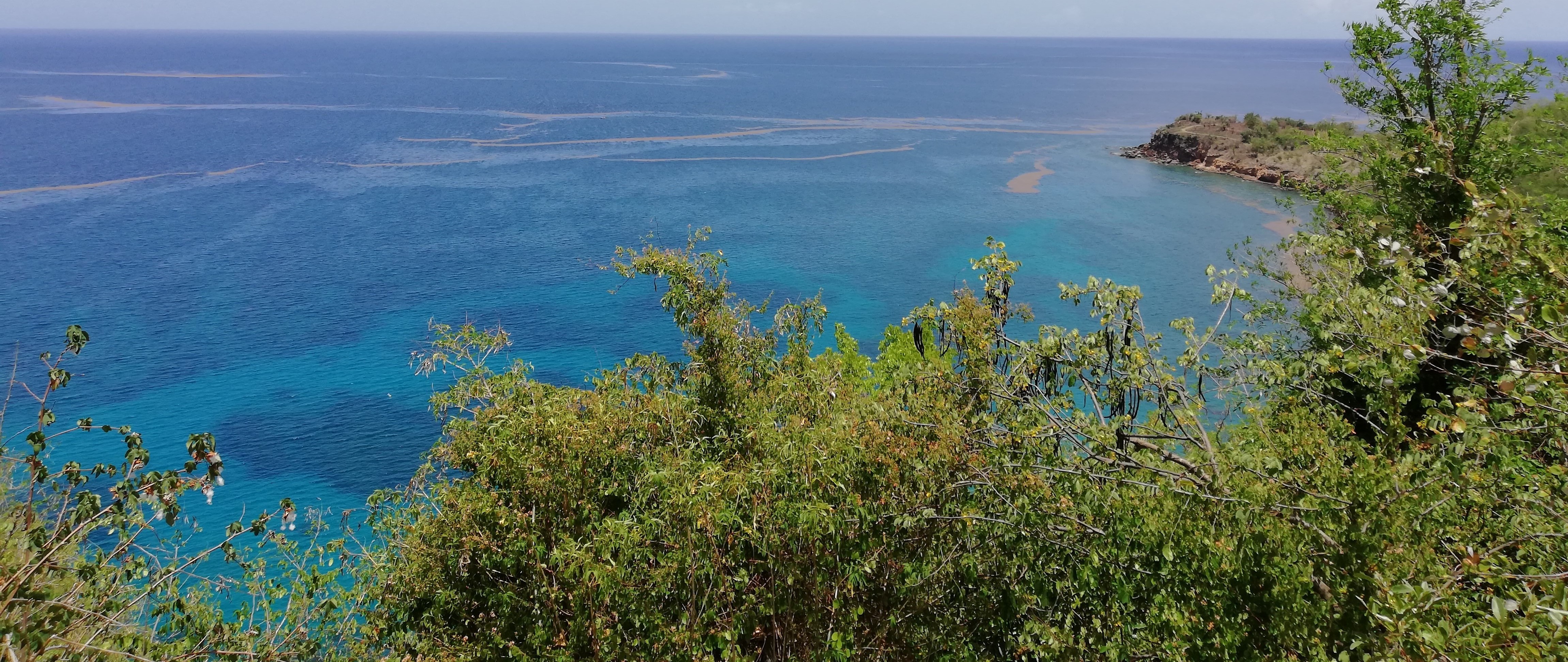
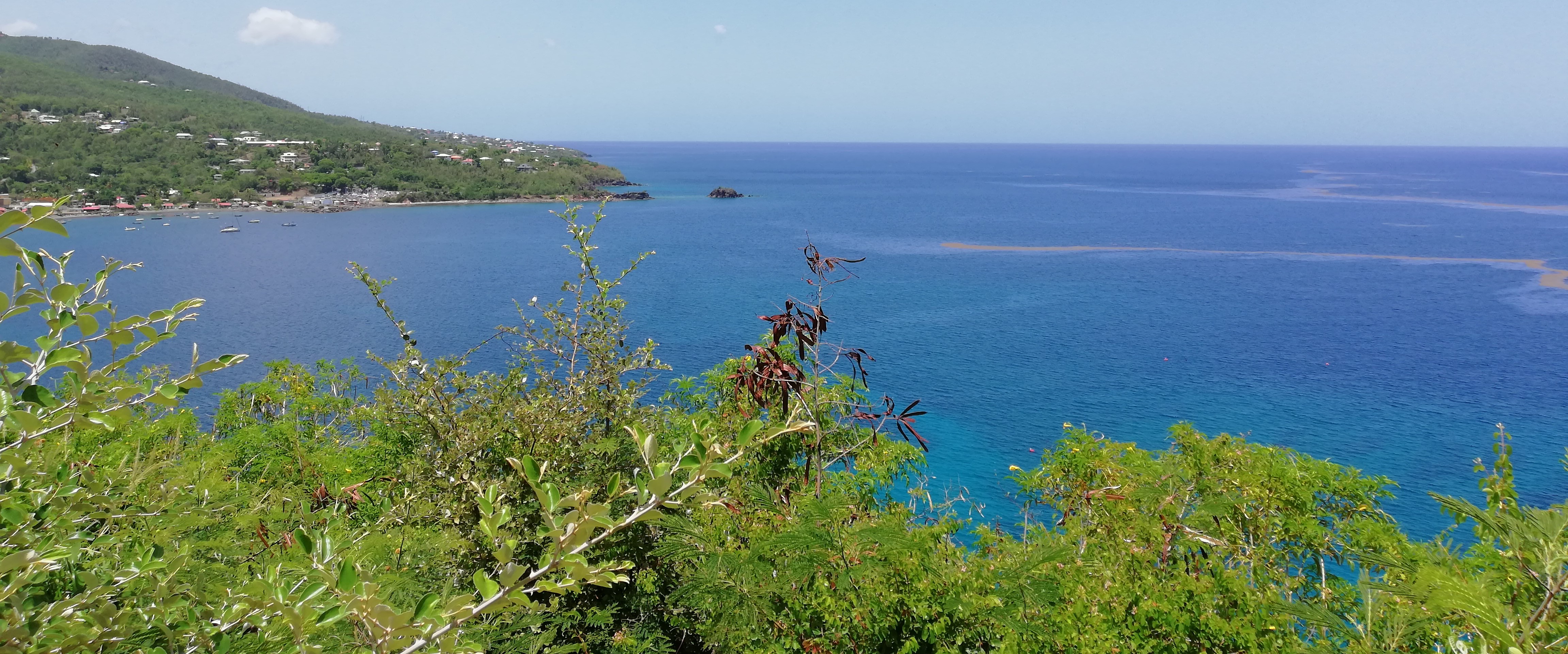
03.06.2018 - Sargassum seaweed approaching the shores of Baie Bouillante, Guadeloupe - Source: Kevin Gross, VisioTerra
In an article for Associated Press written in 2015, David McFadden already reported: "From the Dominican Republic in the north, to Barbados in the east, and Mexico's Caribbean resorts to the west, officials are authorizing emergency money to fund cleanup efforts and clear stinking mounds of seaweed that in some cases have piled up nearly three metres high on beaches, choked scenic coves and cut off moored boats."
Looking for the cause of the presence of Sargassum in Gulf of Mexico, reseachers do not originate the source in Sargasso Sea, East of Georgias coast, but rather South America:
"Among these factors, the ANSES" [French National Health Security Agency] "experts mention the warming of the seas, a direct consequence of global warming, which creates a favorable environment for proliferation."
"But it is especially towards the human activity around the Amazon River that one must turn to understand the phenomenon. Every day, countless quantities of polluted water are poured into the river. Pollution caused by the bad treatment of wastewater, and especially by the dumping of heavy metals, including mercury, by miners who use them to amalgamate gold. In addition, agriculture and intensive land-clearing, also at the origin of the influx of nutrients (phosphates, nitrates), are determining factors in the growth of algae."
